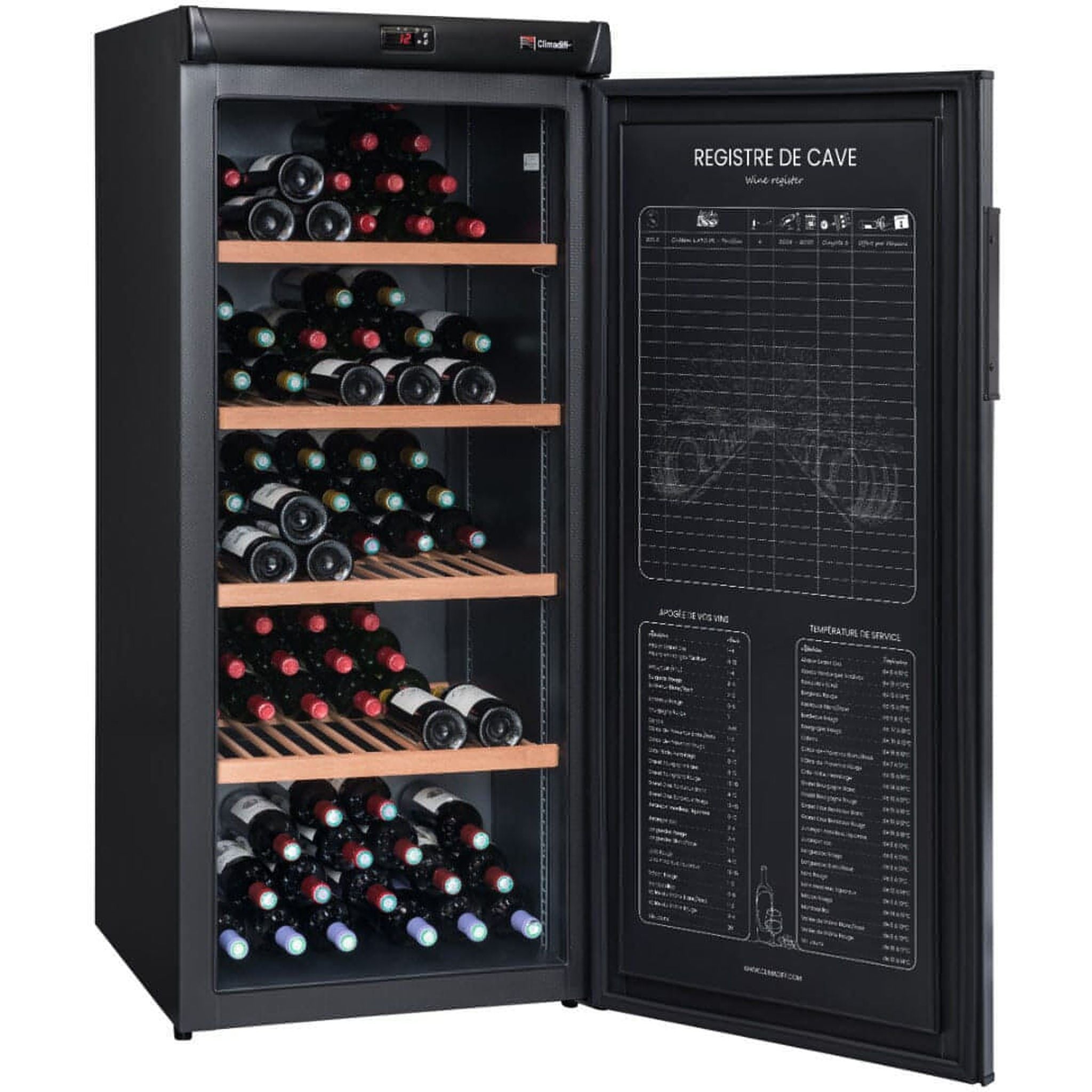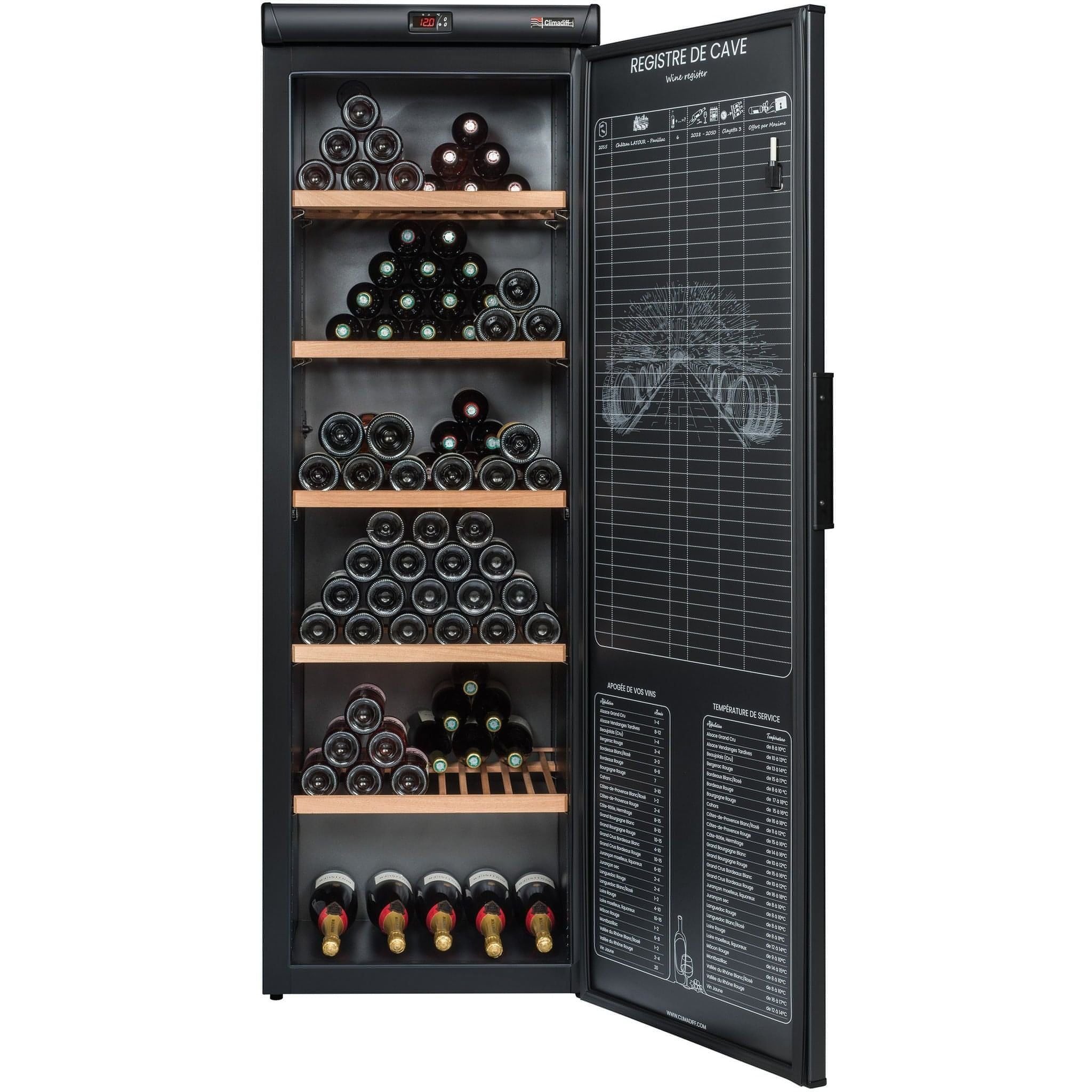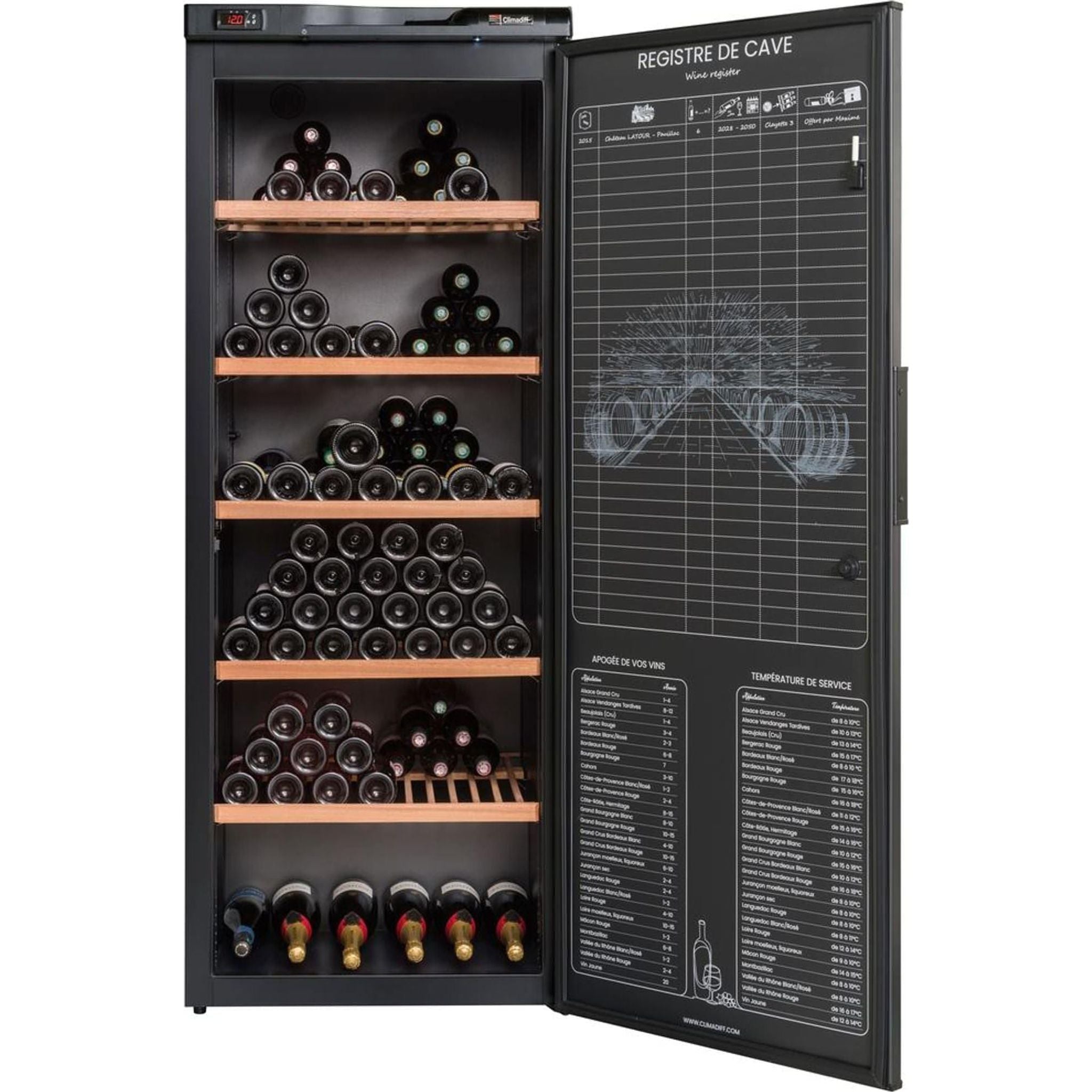Buying a bottle of wine will be motivated by its individual flavour, its style and its longevity.
Ultimately, the drinking experience it offers. Yet, that exact drinking experience wouldn’t be available without the unique and ongoing growing process of grapes.
With that said, do you know how your favourite bottle of Pinot Noir is produced, other than coming from a vine?
Unless you’re a wine enthusiast, studying vineyards and individual grapes, it’s highly likely that you’ll mainly be interested in consuming a bottle.
Yet, to truly appreciate the value of a good bottle, it’s good to know where it’s come from, how it’s made and also how to preserve it through optimal storage.
Did you in fact know that the grape Pinot Noir is highly sought-after, yet a challenging grape to grow? As it produces a popular and easy to find wine, we’re pretty sure that winemakers love that challenge.
Here’s a behind the scenes of Pinot Noir as a grape and a likely feature in your freestanding wine fridge.
Facts About Pinot Noir
Pinot Noir, as we’re sure you’ll know is a loved grape, sought-after in the wine industry. It produces some of the most coveted bottles of red wine, covering a number of different variations.
Starting in Burgundy, France, its originality has spanned the new world, now grown in places like Chile, providing optimal growing environments. This is down to the fact that the grape typically features thin skin, unsuitable for hot, humid climates, posing risks of bursting.
However, through experience, winemakers have refined their growing techniques, making it a much-loved grape to grow, although pricey at times. You’ll find vineyards of it from France and Germany, to across the globe in New Zealand.
Pinot Noir is available in a number of variations, all down to where and how it’s been grown. Available in its infancy, this grape variety provides fruity, sharp flavours of berries and cherries.
This will commonly be the case for a grape which has been produced in the New world. In its maturity, it offers meaty and forest-like tastes, typical of a European Pinot Noir.
Wherever in its lifespan, Pinot Noir however offers a light bodied, velvety wine, with low tannins, all down to its skin and formation.
As the grape can offer different flavours and styles, it’s important to gauge its variations, helping you select your favourite Pinot Noir.
Variations of Pinot Noir
Burgundy
Burgundy is the home, the true origins of Pinot Noir, posing as an expert winemaking region.
Providing optimal environments to grow the delicate grape, the European setting allows for a balance between sunlight and rainfall throughout the flowering and harvesting periods.
Although the Burgundy production of wine offers a unique variation of Pinot Noir, there are in fact sub-variations within the region, all down to the hierarchy of winemakers.
Commonly, you’d find a singular owner of a vineyard. Yet, throughout the region, you’ll find multiple owners of a vineyard, all ranking from regional, district and peak levels.
Those levels will dictate the quality and ageing capabilities of a Pinot Noir. To help select the right level of quality, it’s important to understand how to spot a peak bottle from a regional, as peak winemakers will harness the value and the appeal of the finesse of Pinot Noir.
Starting at the bottom of the hierarchy, regional wines are recognised with Bourgogne in their title. While ranked at the base of quality, worthy bottles can be produced, yet best consumed in their infancy.
Next up, at district level, the word Bourgogne will be removed from the title, simply named after its production location. Greater with ageing, district wines boast elegant styles, offering the true character of Pinot Noir.
Yet, your peak winemaker, recognised as premier or grand cru, will offer the best Pinot Noir, down to its maturing capabilities, its quality and its offering for an optimal drinking experience.
Understanding the complexity of the Burgundy hierarchy is very important to select the style of Pinot Noir you favour, which will define the level of care provided throughout the harvesting and fermentation processes.
California
California, of the USA provides ideal environments for growing Pinot Noir. There are plenty of vineyards which are positioned fittingly to harvest the dainty formation of the grape.
This is down to weather forecasts, where rainfall is typical, yet to a low strength, helping to keep the formation of skin.
Typically, Pinot Noir will harvest to its prime in California, down to the exposure vineyards have to marine airflow, providing fresh, ripe and true reflections of the grape’s layers.
Through this climate, succulent, perfumed and vibrant characteristics are likely, offering a unique take on a Californian Pinot Noir.
Again, you can find different qualities and styles of Pinot Noir. Yet without a regional hierarchy, like Burgundy, your best bet will be to try a number of different USA bottles.
Australia
If you’re searching for a light, fresh Pinot Noir, ideal for chilling, selecting an Australian made bottle will be recommended. Down to breezy climates, the ripening process is controlled, where the true flavours of Pinot Noir can be preserved.
Victoria is one of the most well-known areas which provides the optimal growing environment for this exclusive, graceful, yet powerful grape. Focusing in even further, Geelong, The Yarra Valley and Mornington Peninsula are three key areas within the state which are well-known for their quality of Pinot Noir.
Down to this, if you are looking for a fruity and plump red wine, with delicate tannins, you’re best searching for one from the state of Victoria.
New Zealand
Although Pinot Noir can stand challenges in New Zealand when considering the extensive maturity process, areas of the country meet up to the standards of originality, founded in Burgundy.
In fact, it offers a thriving environment for succulent and plump fruits to grow, serving as a poetic, smooth and juicy red wine.
This will be the case when purchasing Pinot Noir from areas such as Martinborough, Marlborough and the Central Otago of the South Islands.
Through continental temperatures, longer growing and ripening seasons are likely, motivating the growth of pure and delicious takes of the grape.
Chile
Chile also stands as an exceptional location to grow Pinot Noir, especially on the cooler, coastal vineyards. The coastal air, again similar to California, offers the opportunity to grow succulent fruits, ready to ferment into wine.
Through the optimal growing conditions, the right level of acidity can be aimed for, which is very important when considering tannins in red wine.
The intention is to produce a fruity, mouth-watering wine, which avoids sharp and sour tastes. That’s the true capabilities of Pinot Noir while situated in cooler climates.
Like other Pinot Noir bottles, Chile’s wines are cherry-scented, yet, richness and a greater punch of flavour are likely, down to the controlled and concentrated benefit of coastal effects.
Selecting a Pinot Noir
Who knew that there were so many different variations of Pinot Noir? Deciding on a singular bottle can be very difficult. Yet, it’s all about your personal palate and your intentions for your next bottle.
If you’re hoping for a warm, forest-like and meaty taste and aroma, selecting a European Pinot Noir will be recommended.
This is down to the balanced environments, expected from places like Germany and Burgundy, the homeland of Pinot Noir.
If you’re hoping for fruity, fresh and light tastes and aromas, selecting a Pinot Noir from the new world will be encouraged. Places like Chile and New Zealand provide colder temperatures, helping to boost the freshness of grapes, along with controlling their ripeness.
Longevity is also a selling point when buying a bottle of Pinot Noir. For a mature bottle, with preservation as a capability, you’re best selecting a European bottle. Yet, on the other end of the spectrum, for a lighter younger and fresher wine, the new world will offer this. It is however important to remember that the ageing process will be less likely if you opt for a younger, less complex Pinot Noir.
Storing Your Wine for Optimal Taste
Now you know how to pick the perfect bottle of Pinot Noir, it’s time to store it from home. You may believe that a fancy cellar or wine fridge may be necessary. Although ideal if you do have them, you can preserve a bottle perfectly through some easy to follow steps.
To make sure that your wine can avoid spoiling or becoming victim of oxidisation, you should store your wine at 12°C, within an area of 55-80% humidity levels. We understand that it may feel right to store red wine at room temperature, yet this is only ideal for serving purposes.
Avoiding excessive UV light and movement are also recommended, helping to protect your Pinot Noir from layering and uncontrolled ageing.
A wine fridge is a great way of storing your favourite Pinot. Whether you choose a freestanding wine fridge, a built-in wine fridge, or a fully integrated wine fridge, your wine is sure to remain fresh and delicious for much longer.
Wine cabinets can also store your wine in optimal storage conditions, and are perfect for long term wine storage.
Following these steps, while also storing your wine away from lingering, long lasting smells will ensure that you can enjoy your favourite variation of Pinot Noir.
Understandably, some wines are for short-term consumption, and others have the capabilities of ageing gracefully.
Yet, through carefully storing your wine, you can get the most out of it, whether it’s a meaty number from Burgundy or a fruity flavour from Chile.
If you’re looking for the ideal way to store your wine, we have a range of Climadiff small freestanding units that are suitable for Pinot Noir service at 14 degrees Celcius. Pinot Noir should be drunk at the right temperature, and you can do exactly that when you have a reliable Climadiff storage unit to hand.
It’s essential to keep your wine collections at the right storage temperature, otherwise, your alcohol could seriously become detrimental. Climadiff creates its products with excellence in mind at all times, making its models both reliable and long-lasting.
We couldn’t recommend Climadiff more, which is why we’re so passionate about stocking them on our site.
If Pinot Noir isn’t quite your favourite wine, keep your eyes peeled for more behind the scenes blogs around sought-after grapes, turned into our much-loved bottles. Alternatively, for advice on wine storage, get in touch with our team at Elite Wine Refrigeration.







